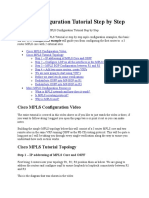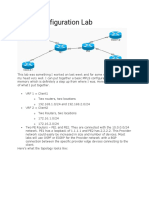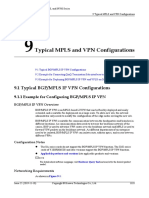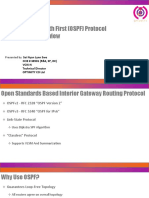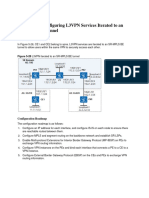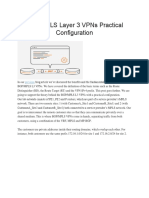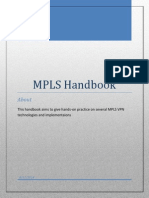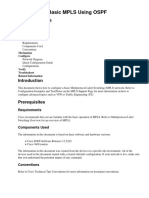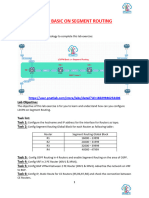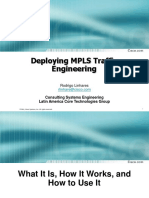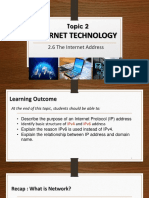0% found this document useful (0 votes)
303 views37 pagesMPLS Configuration Tutorial Cisco (Step by Step)
This document provides a step-by-step tutorial on configuring MPLS on Cisco routers, detailing the setup of a 3-router MPLS core and two external sites using OSPF as the routing protocol. It includes commands for IP addressing, enabling MPLS, configuring LDP, establishing BGP sessions, and creating VRFs for customer sites. The tutorial is designed for users to follow along, with verification steps and commands provided throughout the process.
Uploaded by
jolo200test1Copyright
© © All Rights Reserved
We take content rights seriously. If you suspect this is your content, claim it here.
Available Formats
Download as PDF, TXT or read online on Scribd
0% found this document useful (0 votes)
303 views37 pagesMPLS Configuration Tutorial Cisco (Step by Step)
This document provides a step-by-step tutorial on configuring MPLS on Cisco routers, detailing the setup of a 3-router MPLS core and two external sites using OSPF as the routing protocol. It includes commands for IP addressing, enabling MPLS, configuring LDP, establishing BGP sessions, and creating VRFs for customer sites. The tutorial is designed for users to follow along, with verification steps and commands provided throughout the process.
Uploaded by
jolo200test1Copyright
© © All Rights Reserved
We take content rights seriously. If you suspect this is your content, claim it here.
Available Formats
Download as PDF, TXT or read online on Scribd
/ 37
